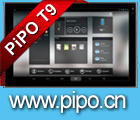OLPC is probably looking for a non X86 architecture for XO-2, probably ARM, where several providers can provide the processor. Using ARM Cortex, OLPC can use any of Texas Instruments, Mavell, Freescale, Samsung, Qualcomm, Nvidia and others, all interchangeably, independently of the deals that will be put in place. The idea being that having all these ARM Cortex providers being more or less compatible with each other, enabling minimal changes in motherboard designs to have them all be compatible, this enables competition in the processor market. This will more quickly drive the prices down much further. This is the only way you can optimize the interpretation of Moore’s law which says that you can cut the price and power consumption of laptops by half every 18 months.
There is a basic reason AMD is not too enthusiastic about this whole new low cost laptop market. The reason is written on the wall, everyones can see it coming, cheaper laptops means it will be much harder to find profits in the industry. AMD isn’t exactly having an easy time already as things are today, Intel’s profit margins and overall income have shrinked 90% in 2008 compared to 2007.
I believe OLPC should use Google Android with Sugar on top, and they should increasingly rely on cloud computing such as the recently rumored Google Web Drive service to store and share all the data on. With XO-2, you should much further synchronize the way the school servers synch storage, processing power and contents to and from the cloud. Basically what you get is an overly simplified Internet access terminal, one with a small ARM Cortex processor behind the next generation of even lower power and lower cost Pixel Qi screens. One that just relies on basic Google Gears for local content caching, and let most of the rest happen using the much cheaper cloud.
$100 laptops using ARM are possible today already. Chinese GPS manufacturers are making them already using uber simple Linux and last generation MIPS or ARM processors: http://techvideoblog.com/category/laptops/
This makes it obvious that OLPC can achieve a $75 price point on XO-2, consider also the advantage of using a dual touch-screen, is that ou can even more easilly mass manufacture exactly the same model for the whole world. Since all the different keyboard layouts and all of the local interfaces are simply going to be a software function of the touchscreens. Mary-Lou Jepsen has done it once already. She can do it again.



